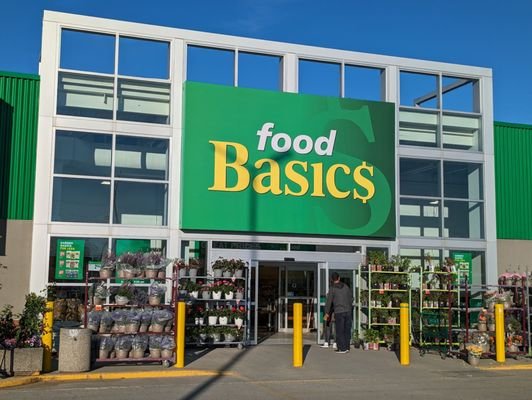When it comes to saving money and eating well, mastering food basics is your best bet. This guide is tailored for Canadians who want to shop smarter, cook healthier, and enjoy more variety—all while keeping their grocery budgets in check. Whether you’re a seasoned home cook, a health-conscious eater, or a coupon-clipping champion, we’ve got you covered.
Table of Contents
What Are Food Basics?
Food basics refer to the essential food items that form the foundation of most meals. Think staples like rice, pasta, beans, vegetables, and pantry essentials such as oils, spices, and flour. By understanding food basics, you can make better choices, stretch your budget, and create meals that are not only nutritious but also flavorful.
Canada offers a unique grocery landscape. Between seasonal produce, regional specialties, and a wealth of grocery stores catering to various budgets, there’s plenty of opportunity to shop smarter and focus on essentials.
Why Food Basics Matter
- Budget-Friendly:
Stocking up on food basics can significantly lower your grocery bills. Staples like oats, lentils, and canned goods are affordable and versatile, ensuring you always have options for quick, cost-effective meals.
- Healthier Choices:
Cooking from scratch with basic ingredients often results in healthier meals compared to prepackaged or processed options laden with sodium and preservatives.
- Reduce Food Waste:
Buying versatile basics means fewer odd ingredients sitting in your fridge or pantry unused.
Table of Common Food Basics and Costs in Canada
Here’s a quick look at essential food basics, average costs in Canada, and some tips for smart buying:
| Food Basic | Average Cost (2024) | Tips for Savings |
|---|---|---|
| Rice (5kg) | $12-$15 | Buy in bulk for better pricing. |
| Lentils (2kg) | $6-$8 | Opt for dried lentils over canned. |
| All-Purpose Flour | $4-$6 (2.5kg) | Store flour properly to extend shelf life. |
| Canned Tomatoes | $1-$2 per can | Look for sales or canned multipacks. |
| Potatoes (10lb bag) | $4-$7 | Choose loose over pre-bagged for flexibility. |
| Eggs (dozen) | $3.50-$5 | Seek out local farms or farmer’s markets. |
| Milk (4L) | $5-$6 | Compare brand prices; store-brands save you. |
| Frozen Vegetables | $3-$5 per 750g | Stock up during sales for variety. |
Use this table as a starting point to help you plan your grocery runs and meal prep.
Tips for Buying Food Basics in Canada
1. Shop Seasonally
Fruits and vegetables are cheaper (and tastier!) when they’re in season. For example, in winter, stock up on root vegetables like carrots and sweet potatoes, whereas summer is the perfect time for berries and corn.
2. Know Your Grocery Stores
Stores like Food Basics, No Frills, and FreshCo consistently offer great deals on staples. Pair these with loyalty points from PC Optimum or Aeroplan to save even more.
3. Use Coupons and Flyers
Keep an eye on weekly flyers and coupons to find discounts on food basics. Apps like Flipp allow you to compare prices across multiple stores to ensure you’re getting the best deal.
4. Buy in Bulk (Responsibly)
Stores like Bulk Barn and Costco are a treasure trove for food basics like grains, legumes, and spices. Just ensure you’re buying quantities you can use before they expire.
5. Look for Generic Brands
Store-brand or “no-name” products often offer the same quality as big-name brands but at a fraction of the price.
6. Freeze and Store for Longevity
Stock up on basics during sales and freeze perishable items (like bread, butter, and even milk) to extend their shelf life.

The Nutritional Aspect of Food Basics
Balancing a meal doesn’t have to mean breaking the bank. Pair food basics like rice or pasta with proteins like eggs or tofu for well-rounded nutrition. Spices and herbs elevate these staples, turning simple ingredients into restaurant-worthy dishes.
For health-conscious shoppers, incorporate fibre-rich options like whole-grain pasta or quinoa, and lean proteins like lentils or canned fish. These provide substantial nutritional value without costing a fortune.
A Quick Budget Meal Idea:
- Ingredients:
- 1 cup lentils ($0.70)
- 1 can diced tomatoes ($1.50)
- 1 onion ($0.50)
- Spices and rice (already in your pantry)
Cook lentils, sauté onions, mix in the tomatoes, and season with your favorite spices. Serve over rice for a hearty and healthy meal that costs less than $4 for 4 servings!
FAQs About Food Basics in Canada
Q1. What are some food basics every home cook should have?
Every home cook should stock up on essentials like rice, pasta, beans, canned tomatoes, onions, eggs, and basic spices. These items allow for endless flexibility when preparing meals.
Q2. Where can I find the best deals in Canada for food basics?
Stores like No Frills, Food Basics, and Walmart often offer competitive deals. Check flyers regularly and use loyalty programs like PC Optimum to earn points for future savings.
Q3. How can I save money on groceries without compromising nutrition?
Focusing on food basics like whole grains, legumes, and frozen vegetables is a great way to save money while ensuring balanced nutrition. Buying in bulk and preparing meals at home also contributes to significant savings.
Q4. Are generic brands as good as brand-name products?
Yes, in many cases, generic products are just as good as their branded counterparts. Products like canned beans, flour, and pasta often come from the same suppliers but are priced lower due to minimal packaging and advertising costs.
Q5. What food basics can I freeze to prevent waste?
Many food basics can be frozen, including bread, butter, shredded cheese, cooked rice, lentils, and even milk. Flash-freezing vegetables like spinach or chopped peppers can also extend their shelf life.
How Food Basics Can Transform Your Kitchen
By focusing on food basics, you can create meals that are affordable, nutritious, and delicious. From hearty lentil soups to satisfying pasta dishes, these staples hold the key to mastering frugal, healthy cooking. With a little planning and some creativity, food basics can help you cut costs without sacrificing your culinary experience.
Looking to level up your grocery game? Start tracking deals and creating weekly menus centered around versatile staples. Your wallet—and your taste buds—will thank you.



2 Comments
Pingback: The Importance of Health Coverage for Canadians
Pingback: Understanding Health Policies for the Health-Conscious in Canada